On my last post which featured closeups of mating Lark Sparrows, long-time follower of my blog Tana Hunter asked “How about getting this close to some meadowlarks?” Her request reminded me that I’ve posted very few images of Western Meadowlarks in the 19 months I’ve been blogging so I did a little digging and these images are what I came up with. It’s another relatively long post but with this weather and its attendant crappy light I can’t be out shooting birds so I might as well be playing around with their images to take some of the sting out of my cabin fever…
Here are a few interesting factual tidbits about Western Meadowlarks to hopefully get you in the mood:
- Although early explorers (including Lewis and Clark) were aware of the existence of the Western Meadowlark, it was subsequently ignored by most naturalists of the day so when John James Audubon gave the bird its Latin name, he chose Sturnella neglecta (the species name in recognition of that lack of attention)
- The Western Meadowlark is not a lark (though it is a gifted songster); instead it is most closely related to the blackbirds
- When probing into soil for food, these birds force their long bills into the ground and then the mandibles are spread apart, opening and loosening the soil to make food more obtainable
- They are particularly fond of sprouting grain in farmers fields. They bore into the soil with the long bill, grasp the soft germinating seed and then crush it to obtain the milk and usually discard the rest of the seed
- They don’t innately know how to sing like a meadowlark – they learn their songs from other meadowlarks through their first winter (“critical period”). If isolated from other meadowlarks during this period they sometimes learn the songs of other species (Red-winged Blackbird, Common Yellowthroat, Eastern Wood Peewee, for example) and sing them for the rest of their life.
The rest of this post will be mostly a mixed bag of images, with relatively little additional babbling from me.
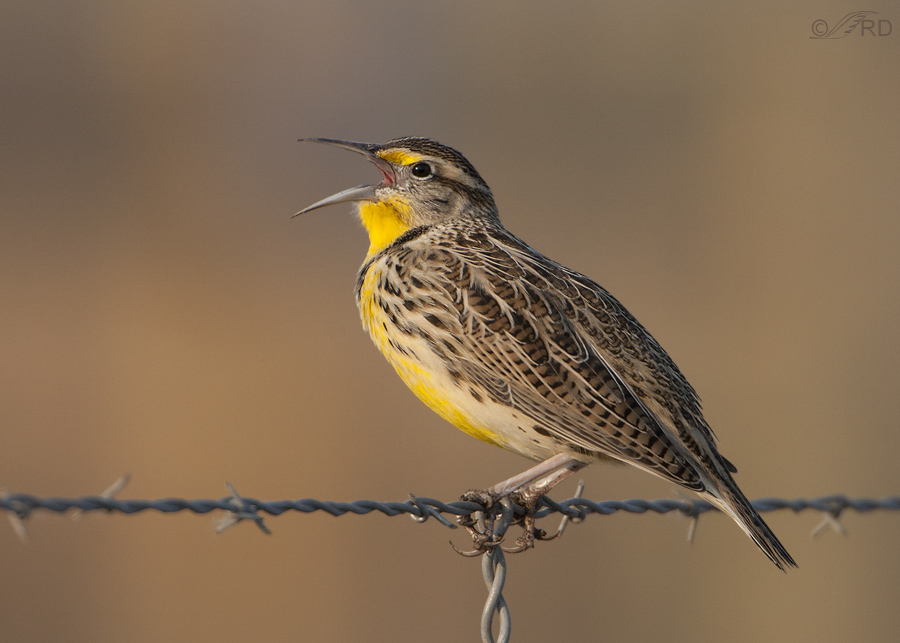
1/800, f/9, ISO 500, 500 f/4, 2.0 tc, natural light, not baited, set up or called in
Western Meadowlarks on barbed wire are almost an icon of the American west.
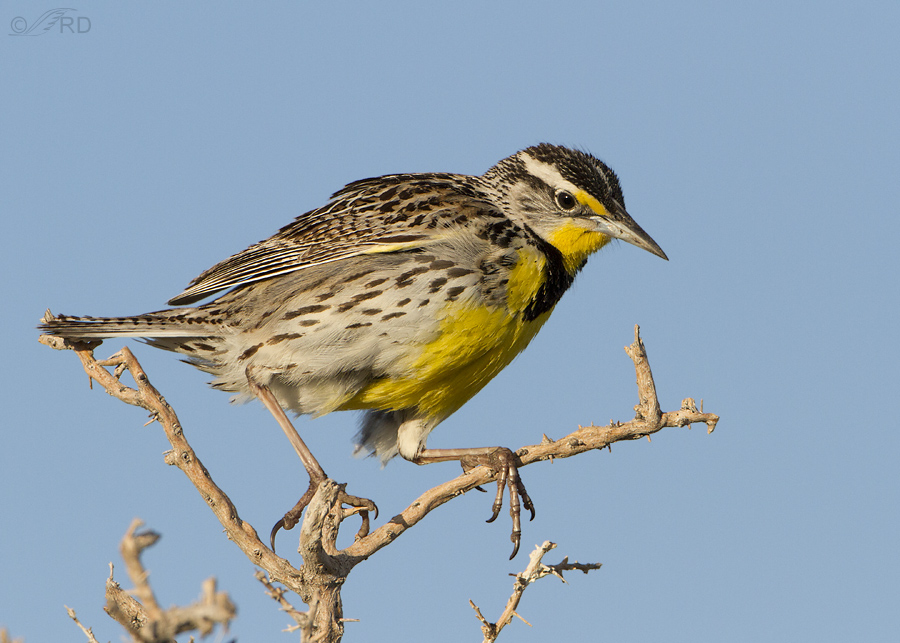
1/2000, f/8, ISO 500, 500 f/4, 1.4 tc, natural light, not baited, set up or called in
But they’ll perch on just about anything that is elevated and will support their weight.
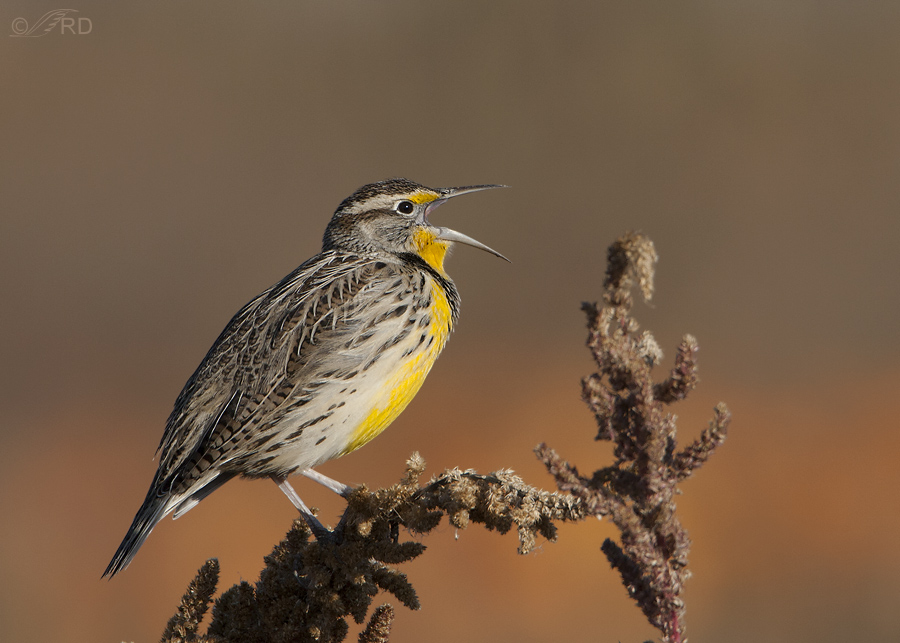
1/1000, f/8, ISO 400, 500 f/4, 1.4 tc, natural light, not baited, set up or called in
A true image of the fall, with ripe mullein as the perch and a pumpkin patch in the background.
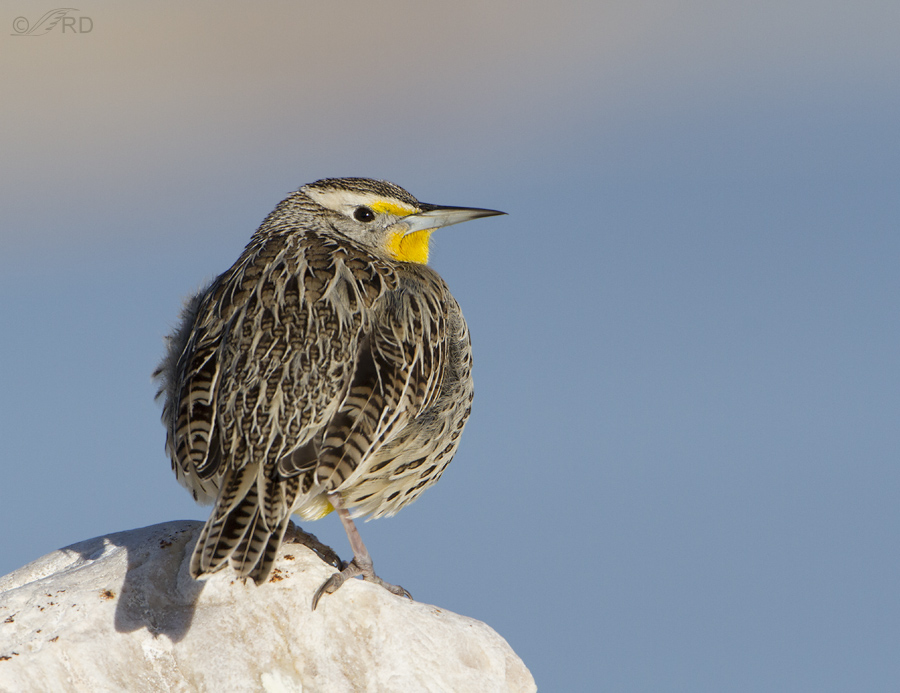
1/1250, f/9, ISO 500, 500 f/4, 1.4 tc, natural light, not baited, set up or called in
Here the background is the Great Salt Lake. I’ve always liked the colors and patterns on the backs of meadowlarks.
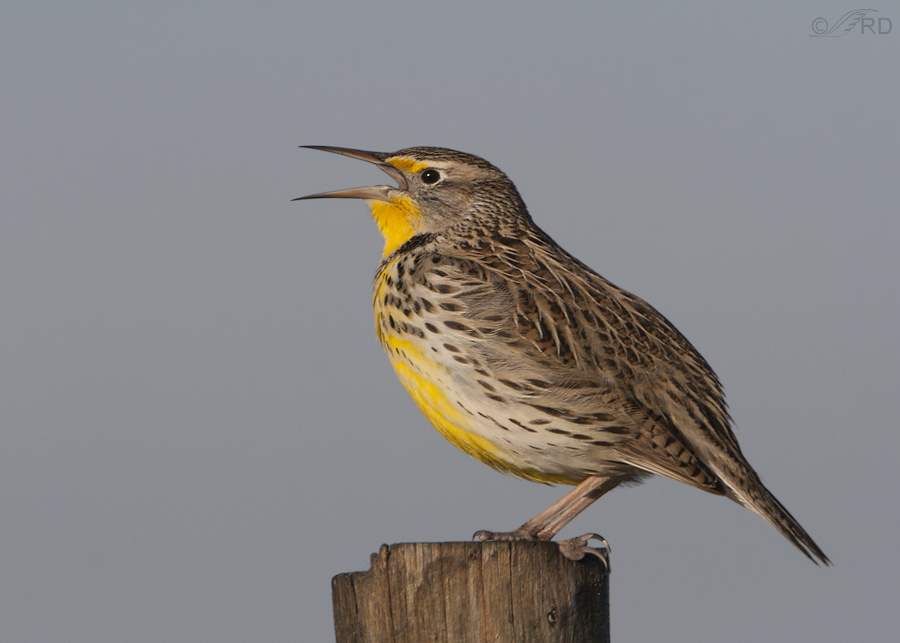
1/1600, f/9, ISO 500, 500 f/4, 1.4 tc, natural light, not baited, set up or called in
Another icon of the west – a singing meadowlark on a post.

1/2000, f/8, ISO 400, 500 f/4, 1.4 tc, natural light, not baited, set up or called in
Some meadowlarks stay in Utah throughout the year. This one is perched on snowy rabbitbrush.
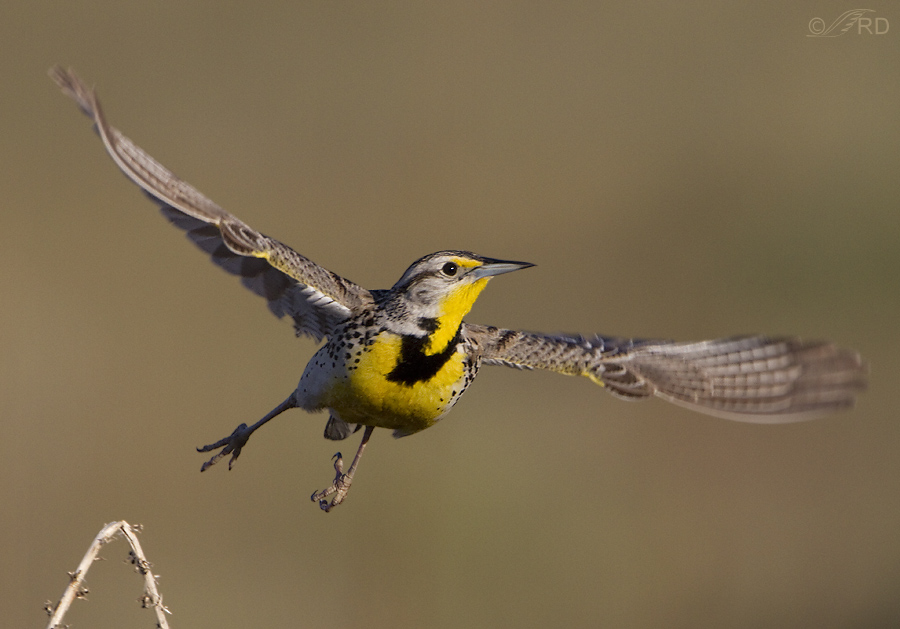
1/2500, f/7.1, ISO 640, 500 f/4, 1.4 tc, natural light, not baited, set up or called in
A take-off from a bent over sunflower stem.

1/1250, f/8, ISO 400, 500 f/4, 1.4 tc, natural light, not baited, set up or called in
This bird seemed more lank and rangy to me than most of its kind.
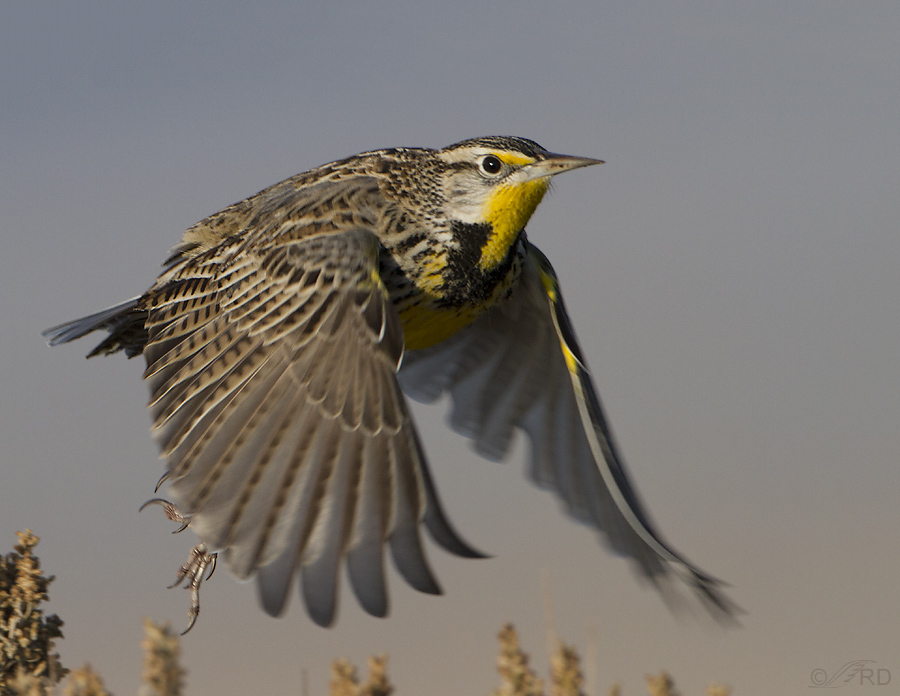
1/2000, f/8, ISO 500, 500 f/4, 1.4 tc, natural light, not baited, set up or called in
Another take-off. I work at these lift off shots with passerines a lot but they seldom come out well.
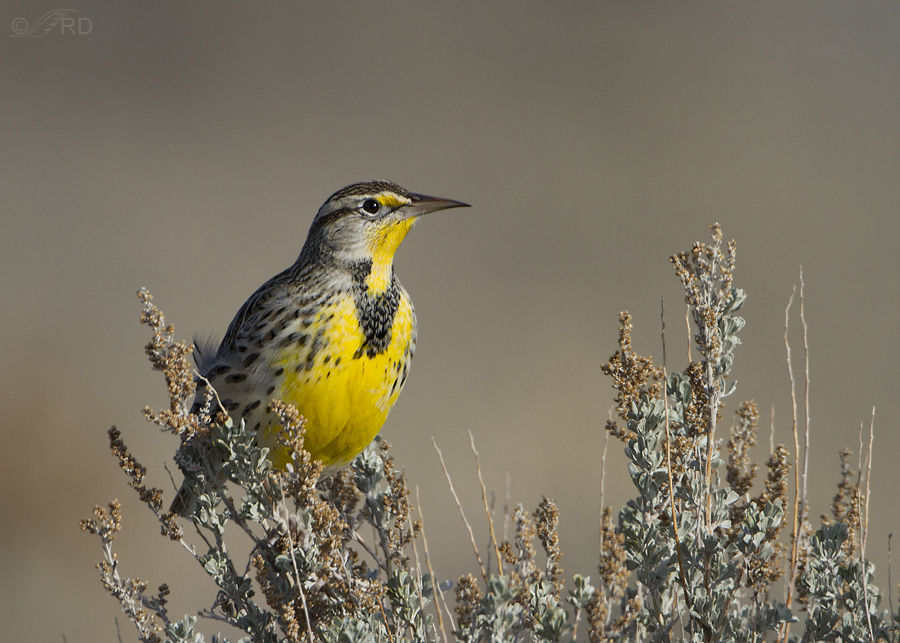
1/4000, f/6.3, ISO 640, 500 f/4, 1.4 tc, natural light, not baited, set up or called in
In this image I liked the habitat provided by the sage. This was taken about a week ago.

1/800, f/10, ISO 500, 500 f/4, 1.4 tc, natural light, not baited, set up or called in
Very early in the morning. The rising sun provided the warm color tones.
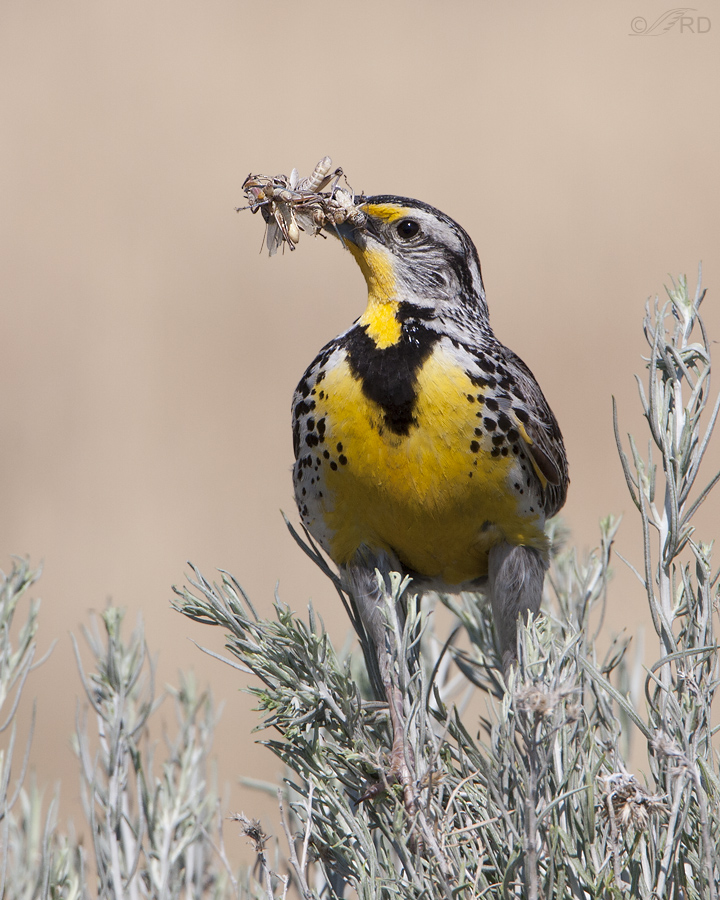
1/1250, f/9, ISO 500, 500 f/4, 1.4 tc, natural light, not baited, set up or called in
Though meadowlarks are omnivores, they feed only insects to their nestlings. Each young bird consumes over half its weight in “bugs” per day so the parents really load up when collecting insects to deliver to the nest. I can’t begin to guess just how many young grasshoppers this bird has in its beak but it’s an impressive sight – especially when you think about having to catch each one with its bill already loaded up.
I have a true soft spot in my heart for meadowlarks – largely from memories of growing up on the family farm in NW Montana. And that song – oh what a song! So melodious, catchy and LOUD. There have been many times when both Mia and I have been startled out of our skins as we slowly cruised Antelope Island with the windows down while looking for birds and an unseen meadowlark opened up on us from only a few feet away. Makes us both smile every time, after the adrenalin dissipates…
Ron


I just wanted to say beautiful work and I hope to buy some in the future.
Thanks
Tom Palmore
Wonderful! I think your western meadowlarks are a little prettier than the eastern ones we have here. Both are pretty wonderful, though.
Thanks, Scott. I’ve also heard that the eastern species is more difficult to approach than our version. Don’t know if it’s true…
Thank you! I especially like the one on the mullein with the orange pumpkiny background. I remember these birds in the foothills above Salt Lake when I would walk my dog there in the 1960’s, that is where I first heard their beautiful song. Now I rarely see them anywhere near SLC, but down in Teasdale they nest on our property and sing from our roof. What great shots these are, once again you made my day!
I was hoping you’d see this post, Tana. I’m glad you liked the images.
Thank you for these beautiful pictures of meadowlarks. They are one of my favorite birds and their song is such a delight to hear, it makes me think “ahhh everything is okay.” I’ve never seen such clear closeups of this bird. These are great pictures. Thanks for posting this as a request from my sister, Tana.
I think these birds strike a chord with lots of folks, Teri – you included.
Ron, as always, I’m blown away by the stunning quality of your images. Maria is right.
I haven’t seen Meadowlarks in quite some time (since I left California), and the last time I was in their midst I was shooting with my very slow 70-300mm lens. As such, I have immense admiration for not just the stellar images, but the quantity you were able to acquire of these often furtive birds.
Wherever I’ve lived has had meadowlarks, Ingrid (Montana, California and Utah). Not sure what I’d do without them. Thank you.
Such an incredibly vivid bird – and what’s not to love about a song maker with those colours. Thank you. Lots. Again. Your posts are an education and a delight.
Vivid they are, Elephant’s Child, especially the yellows which are so easy to blow out when you’re photographing them.
You’re an astonishing, master bird photographer, Ron, and I’ve been meaning to tell you that for a while now.
Well, I don’t know about that but I sure appreciate your confidence in me, Maria. Thanks very much.
Thanks for these great shots . Here in the east I don’t see many meadowlarks any more probably do to changing use of farm land. I do beleive I saw some the other day while out on my road bicycle. Do you or have you traveled to other places to photograph birds?
Have you been to Alaska to observe the migrations of shore birds . I hope to get there some day
Eldridge, I pretty much stay in the western states for my photography. I despise flying (not afraid of it, just despise it) and I love to drive and camp so that’s what I do. Made it within 40 miles of Alaska once, (Prince Rupert, BC) but the ferries were full so we didn’t make it all the way. I’d still like to do another road trip up there one day though…